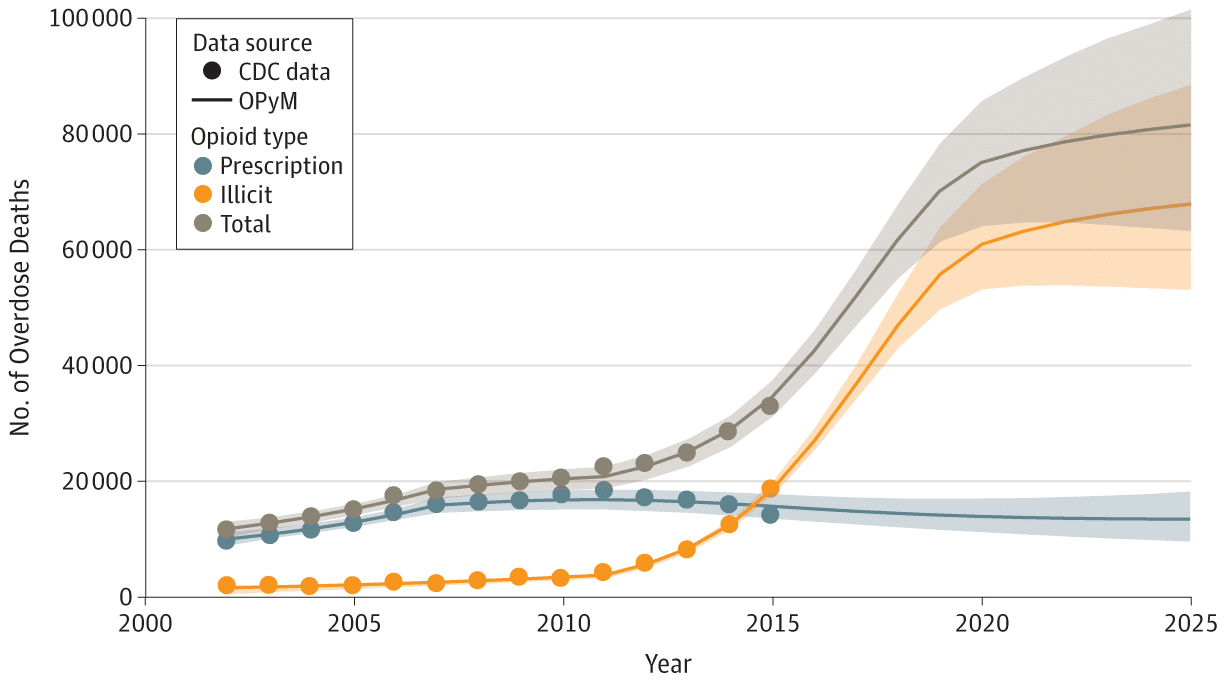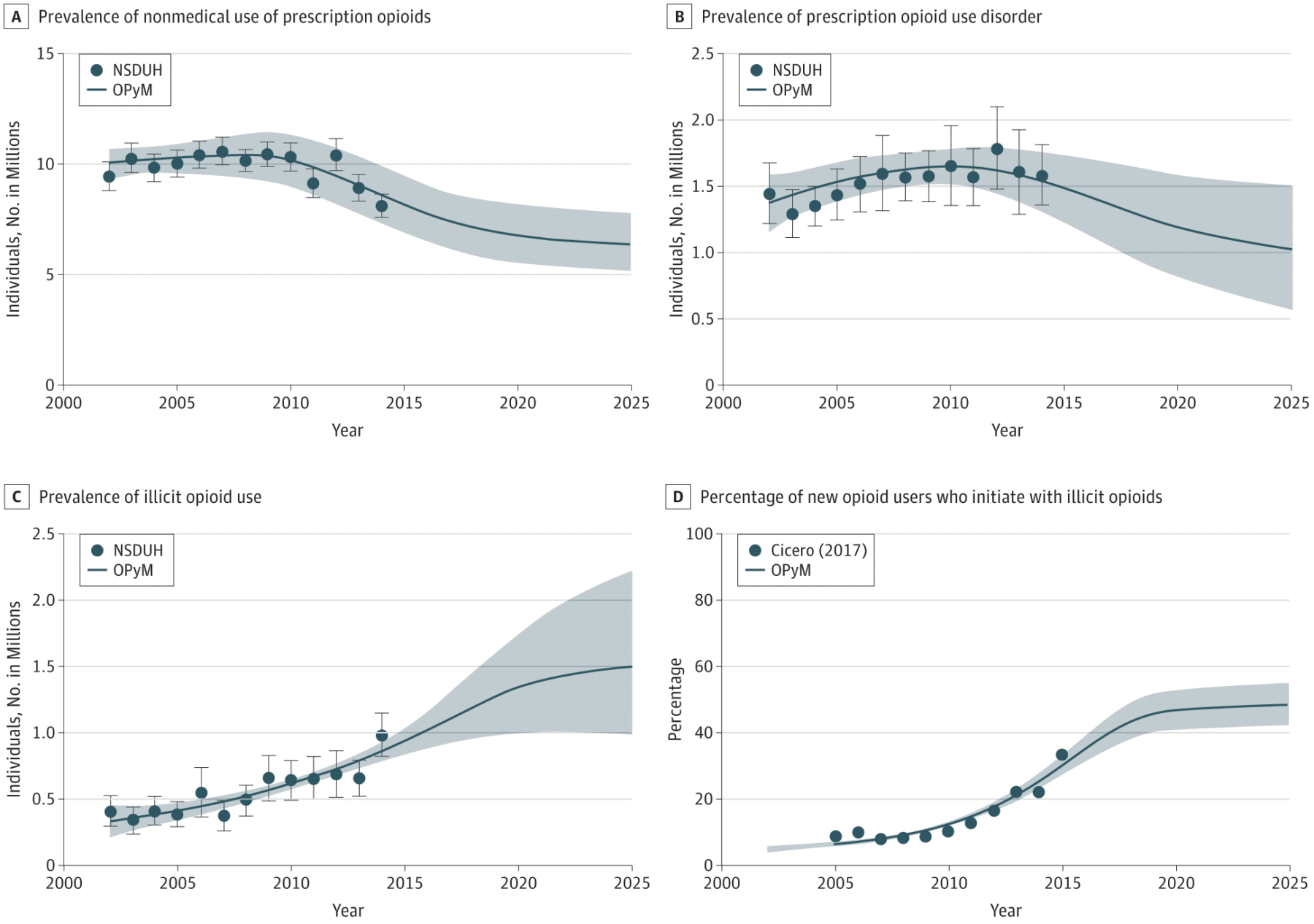Current drug and health policy is clearly not doing enough to end the crisis of opioid-related deaths. But worse, “under current conditions the opioid overdose crisis is likely to substantially worsen,” according to a new study published in the Journal of the American Medical Association.
The study, released February 1, projected the annual number of opioid-related deaths to increase by 147 percent over the course of 10 years, between 2015 to 2025. If trends do not stabilize, the total death toll could reach 1.21 million people by 2025.

The researchers, however, recognize the uncertainty around projecting mortality figures.
In contrast, the study is fairly confident in something else: Even the most successful intervention aimed at the prescription opioid supply would barely make a dent, providing a “modest decrease of 3.8% to 5.3% in opioid-related overdose deaths during 2016 to 2025.”
Studies of popular approaches to the crisis, particularly supply-side interventions like prescription drug monitoring programs, opioid prescribing guidelines, dose-limit laws, prescription drug take-back days, and law enforcement interventions, have “failed to demonstrate a consistent benefit on fatal or nonfatal opioid overdoses,” writes the new study’s authors.
The study’s projection for the total opioid-related death toll is higher (700,400 overdose deaths from 2016 to 2025) than that projected by a similar study conducted at the University of Pittsburgh (510,000 for the same time period). This is because the former’s model accounts for an increasingly lethal supply of illicit opioids, like heroin, which are often cut with fentanyl. This inclusion is critical given the higher percentage of people initiating opioid use with illicit opioids.

The study identifies three broad approaches needed to make a larger impact on the crisis’s growth: “prevention, treatment, and harm reduction.”




Show Comments